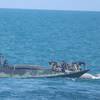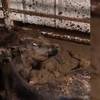In order to promote safe navigation and enhance marine conservation, NOAA’s Office of Coast Survey and the National Marine Protected Areas Center have partnered to publish key information about the location, purpose, and permitted activities of existing marine managed areas off Alaska's southeastern coast in the United States Coast Pilot Volume 8. The U.S. Coast Pilot is used by the maritime industry, fishermen, the military, recreational boaters, and other coastal users of sensitive marine ecosystems.
The southeastern Alaska edition includes marine managed areas between Dixon Entrance and Cape Spencer. It is the first in a series of Coast Pilot publications being produced for all regions throughout the United States. The other eight books of the U.S. Coast Pilot series will be published over the next year, and contain similar information about marine managed areas.
The maritime community relies heavily on the U.S.
Coast Pilot and NOAA navigational charts for information about coastal issues relating to safe navigation, access to marine facilities, and environmental regulations.
The U.S. Coast Pilot has been in continuous print by the federal government since 1867. Ships of 1,600 or more gross tons, and large U.S. naval vessels, are required to carry both the U.S. Coast Pilot and the local NOAA charts that pertain to their area of transit.
Many smaller vessels also carry both the U.S. Coast Pilot and local NOAA charts, although they are not required to do so.
The U.S. Coast Pilot is a series of nine regional books. Each U.S. Coast Pilot contains a variety of information important to navigators of coastal and intra-coastal waters, and the Great Lakes. Each book also contains supplemental information that is difficult to portray on a nautical chart. Examples of topics covered in each U.S. Coast Pilot include channel descriptions, anchorages, bridge and cable clearances, currents, tide and water levels, prominent features, pilotage, towage, weather, ice conditions, wharf descriptions, dangers, routes, traffic separation schemes, small-craft facilities, and federal regulations applicable to navigation. The marine managed areas project now ensures that key environmental features are described as well.
Featured videos

Tracking Foreign Vessels Working in the U.S. Jones Act Market

Inside the Electrified Truckable Tug

Inmarsat Enhances Service to Drive Digitalization
Subscribe for
Maritime Reporter E-News
Maritime Reporter E-News is the maritime industry's largest circulation and most authoritative ENews Service, delivered to your Email five times per week









